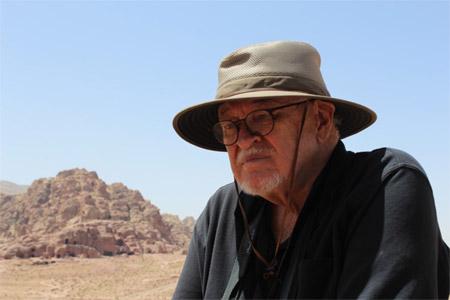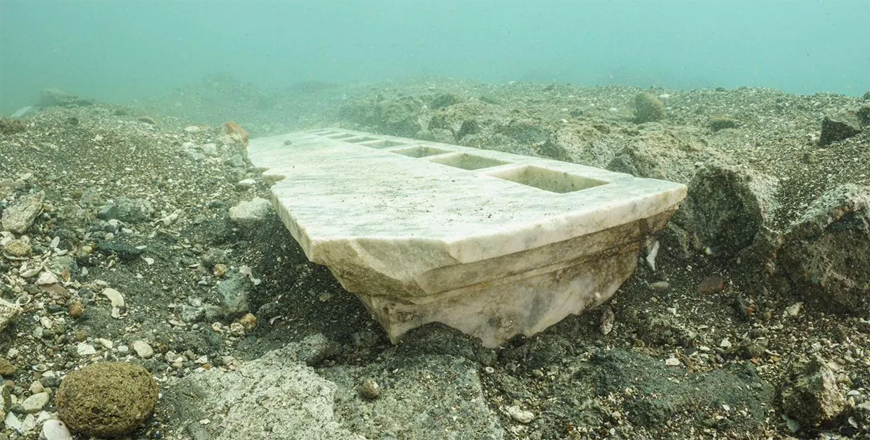You are here
From Yemen to Naples, scholar explores reach of Nabataean civilisation
By Saeb Rawashdeh - Aug 05,2017 - Last updated at Aug 05,2017

David Graf
AMMAN — The Nabataean civilisation, most famous for building the rose-red city of Petra, has been the focus of much of the work of a US academic for almost four decades.
There are two views regarding the Nabataean civilisation, Professor David Graf from University of Miami, explained. One view is the Nabataeans were primarily nomadic bedouins who settled down under Roman auspices at Petra; while the other says that they were a diverse society with a sophisticated core, emerging in the Persian period and becoming an important commercial people with international connections.
The historian and archaeologist believes in the later theory, arguing that "the society was complex, with both sedentary and nomadic elements. The absorption of Greek and Roman culture displays their more sedentary side."
It is now “clear” for scholars that the Nabataeans were operating at both ends of the “incense route”, the scholar told The Jordan Times in a recent e-mail interview.
The incense route were the routes which connected the Mediterranean with lands which produced incense, spices and other luxury goods, especially in India.
Graf noted two archaeological discoveries which indicate that Nabataean traders were operating in southern Arabia, pointing a bilingual Nabataean – Sabean inscription from Marib in Yemen, dated to the early years of Aretas IV (9BC-40 AD), and finds of Nabataean painted pottery at the south Arabian port, near Najran, in south-western Saudi Arabia.
"It is my view that the Roman Aelius Gallus campaign to south Arabia was successful and opened up this route for Rome," Graf stressed, noting that there is also evidence of Nabataeans in the Greek Aegean Sea and Italy, particularly in the bay of Naples, at Puteoli.
From 1980, Graf has been working on inscriptions in the Hishma Desert, in southern Jordan, as a fellow of National Endowment for Humanities at American Centre of Oriental Research, explaining that it has been "a long journey".
"There are over 6,000 Nabataean inscriptions, but they are brief and primarily graffiti or religious in nature," the scholar noted, adding that it is possible to piece together their dynastic history because of references to their kings, "but there are huge gaps in our information before the 1st century BC".
One king is known from early 3rd century BC and the gap is of about a century, the scholar said.
"Early Nabataean coins don't mention the kings, so there is lot of work for researchers. However, their society and daily life is rather the task of archaeology," Graf said.
Furthermore, the Posidippus Papyri, published in 2001, lists an anonymous Nabataean king in the second quarter of the 3rd century, 272-252 BC, and Jozef Milik published a Nabataean inscription from southern Syria that mentions a Nabataean king, which he dates around 200 BC, Graf underscored.
"These kings existed before the first Nabataean king is mentioned in literary sources [around 167BC]. The new discoveries expose gaps in our record and one can only hope new evidence emerges to fill in the gaps," the expert emphasised.
The American researcher is a director of the Hellenistic Petra Project which, in 2007, produced a “stratified context” for a settlement of Petra in the Persian and Hellenistic period, in the 4th -2nd centuries BC.
"I began this project with Stephan Schmidt and continued with Steven Sidebotham, and other scholars were also involved. Archaeology is not the product of a single person, but a team affair," Graf highlighted.
Regarding plans for the future, professor and his team plan to return in 2019 and continue excavation in the centre of Petra.
"Our focus is the occupational history, not monuments [temples and tombs]. The history of the Nabataean settlement reaches back centuries earlier, before what people generally assume," Graf concluded.
Related Articles
AMMAN — The scarce evidence from ancient sources represent basis for discussions on the Nabataeans and their kingdom, which controlled part
AMMAN — At the lecture “New important archaeological result in the downtown Petra”, Laurent Tholbecq from the Université Libre of Brussels,
AMMAN — Puteoli was a Roman city in the Bay of Naples and merchant hub.



















